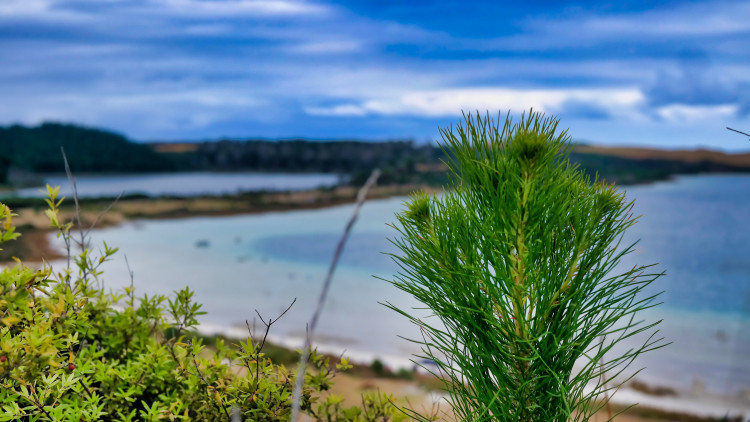
The National Wilding Conifer Control Programme provided $190,000 in the 2019-2020 control season to protect Taharoa Domain from wilding pines.
Taharoa Domain, surrounds Northland’s iconic Kai Iwi lakes. The domain and lakes are 30 kilometres northwest of Dargaville in Northland. The Kai Iwi lakes are probably New Zealand’s best known dune lakes. There are three lakes, each surrounded by pure white sand - Taharoa, Waikare and Kai Iwi.
The domain has been home to Māori for hundreds of years. The area contains wāhi tapu (sacred places) and is still used as a mahinga kai (a place to gather food). The lakes within the domain are rare dune lakes, formed over 1.8 million years ago. These lakes are considered to be nationally significant in terms of their ecological value.
Before settlement the lakes would have been surrounded by shrubs like manuka, ferns and forest which included totora, pohutukawa and kauri and pockets of this vegetation still remain.
This complex and fragile ecosystem is also home to a number of endangered species. These include critically endangered native plants as well as threatened animal species. One of these is the rare dune lake dwarf inanga. These fish live in just 13 lakes in Northland. These tiny fish – most adults are only 4cm long – feed on plankton and are active at night.
The lakes are also home to both species of New Zealand’s native eels or tuna – the long-finned eel and the short-finned eels. The lakes also play host to a number of birds which are under threat including the Australasian bittern/New Zealand grebe.
In recent decades wilding pines have gradually begun to threaten this fragile landscape and its inhabitants. The wildings threaten the delicate balance of this dune lake ecosystem. They effect water acidity and natural vegetation on the lake edge.
Taharoa Domain has been home to Māori for hundreds of years. The area contains wāhi tapu and is still used as a mahinga kai. Wilding pines threaten both.
Control of wilding pines has a double benefit at Taharoa Domain.
Firstly, it removes wilding pines from infested land and allows the land to return to its original use, protecting endangered species and wāhi tapu.
Secondly, removing wilding pines, their spread to un-infested land is slowed as the source of seeds is removed.
The National Wilding Conifer Control Programme announced $190,000 in 2019-2020 to help in the control of the wilding pines within the Taharoa Domain. Control work will concentrate on ground-based methods, with a reduced reliance on herbicide.
The control work at Taharoa Domain will be carried out largely by local rangatahi. We estimate this work will protect more than 550 hectares from infestation.
Check out the next Wilding Pine case study: Mt Tarawera - Protecting the maunga